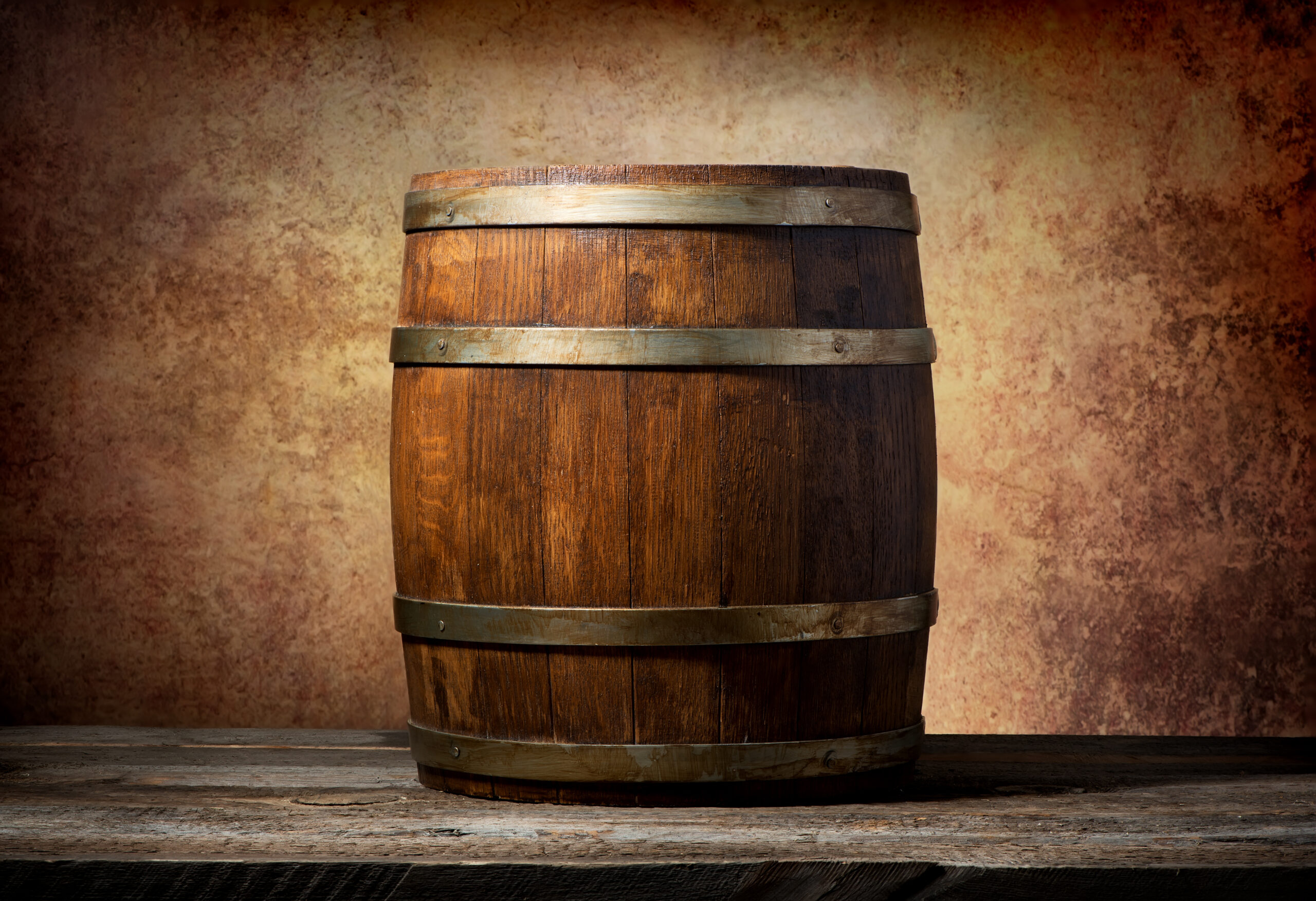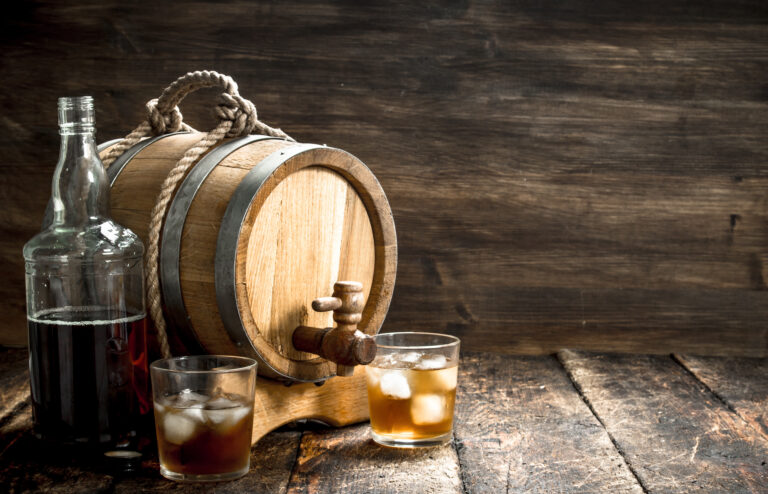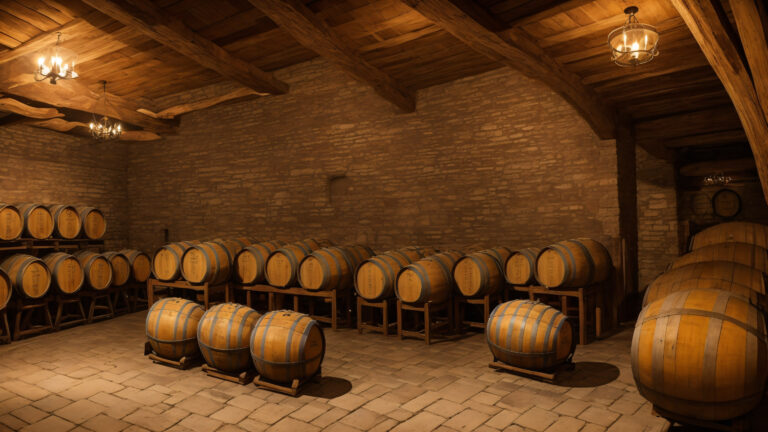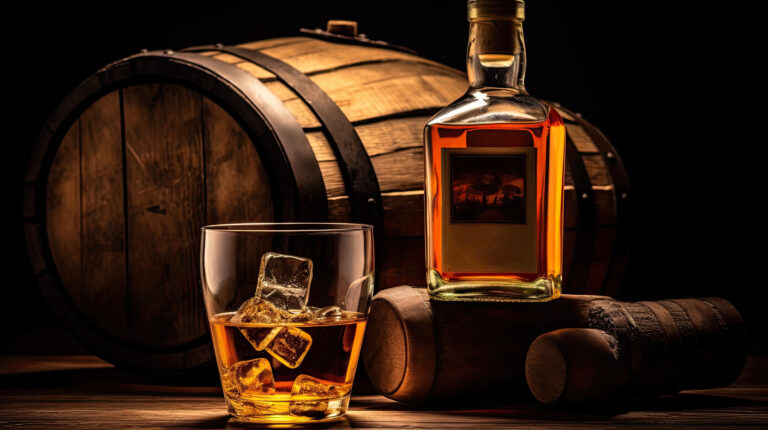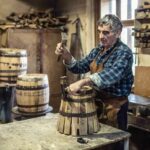Oh, honey, if you’ve ever had a whiskey and thought, “Wow, that’s different!” you’ve probably stumbled upon the magic of the barrel. Forget those sterile lab coats; whiskey makers are more like mad scientists with a passion for flavor, constantly tinkering with the very heart of their craft: the humble barrel. It’s truly transforming the whiskey world, and trust me, you’re about to get the inside scoop on what’s new in the realm of whiskey barrels and how it’s shaking up what ends up in your glass.
The OG: Traditional Oak Barrels, But With a Twist
For centuries, the traditional oak barrel has been the undisputed king, imparting that familiar, comforting flavor to our beloved brown spirits. But now, distillers are getting seriously creative, playing with different wood types and ingenious techniques to birth innovative, mind-blowing flavors.
Think about it: charred American white oak barrels have been the go-to for generations, especially for our beloved bourbon and other whiskies. This beautiful dance between the spirit and the wood gives us those classic vanilla and caramel notes. And that charring process? It’s like caramelizing sugar, but for wood, making those flavors sing even louder.
But hold onto your hats, because some folks are shaking things up!
- Imagine a whiskey aged in hickory, maple, or chestnut wood barrels. These aren’t just pretty faces; they’re bringing in whole new flavor profiles – think nuttiness, a kick of spice, or even delightful fruity notes. Talk about pushing the boundaries of whiskey flavor.
- Then there are the real maestros, steeping their barrel staves in wine, beer, or sherry before assembly. It’s like pre-loading the wood with flavor, so the whiskey can just soak it all up. Hello, complex layers!
- Ever heard of small barrels for a quick aging fix? Yep, some clever distillers are using them to speed up the process. More wood surface area means more flavor, faster. It’s like a fast-track to deliciousness for craft whiskey.
- And for the truly avant-garde, some distillers are aging whiskey under wild conditions, like high heat or rapid temperature changes. They’re literally manipulating the environment to unlock brand-new flavor profiles.
While those trusty oak barrels are still holding strong, these thrilling experiments with alternative woods and aging techniques are truly yielding some exciting new tastes. For us bourbon and whiskey lovers, it means an endless playground of options to explore. The future of whiskey? Oh, it’s not just bright; it’s bursting with innovation.
Get Creative: Experimenting With Different Wood Types
Whiskey makers? They’re an insatiably curious bunch, always on the hunt for that next unique flavor. And lately, many distillers have been seriously experimenting with different wood types for barrels.
Sure, that signature whiskey flavor traditionally comes from those charred American white oak barrels. But some distillers are really going out on a limb, embracing diversity in their wood choices. For instance, imagine a whiskey touched by hickory, maple, or beechwood barrels – they’re known for lending lighter, sweeter notes compared to the robust oak.
Let’s dive into some specifics:
- Hickory barrels are all about those warm, comforting notes of nuts, spice, and a whisper of vanilla. You’ll find several craft distillers now proudly offering a hickory-barrel finished whiskey.
- Maple barrels, no surprises here, bring hints of maple syrup to the party, along with delightful brown sugar and caramel notes. Talk about a treat!
- And beechwood barrels? They’re linked to lovely aromas of honey, citrus, and even a touch of coconut. A handful of European distillers are using beechwood for finishing their precious Scotch whiskies.
But it doesn’t stop there. Some distillers are even importing exotic woods from across the globe – imagine aging your spirits in barrels made of teak, acacia, or mango wood! The sheer possibilities for unique whiskey flavors seem truly endless.
Of course, the charring levels and barrel sizes are still crucial players in the flavor game. You’ll find distillers playing with everything from a light toast to a heavy char, each coaxing out different nuances. And those smaller barrels? They’re still a favorite for speeding up the aging process and creating more concentrated flavors – perfect for those in-demand small batch whiskeys.
By embracing these innovative aging techniques and a diverse palette of wood types, whiskey makers are crafting spirits with truly unique tastes that stand out from the crowd. Bourbon and Scotch aficionados are getting a whole new world of flavors to explore, all thanks to the creativity of distillers relentlessly searching for the perfect barrel. The future of whiskey? It has never looked, or tasted, so good.
Second Life: Re-Using Barrels From Wine, Sherry, Etc.
This is where things get really interesting! Whiskey makers have hit on a brilliant idea: aging their spirits in barrels that previously held wine, sherry, rum, and other alcoholic beverages. It’s like giving the barrel a new lease on life, and in return, it infuses the whiskey with unbelievably complex flavors. The porous wood, you see, acts like a sponge, absorbing all those delicious flavor compounds from its former inhabitants, which then gracefully seep into the whiskey during aging.
Let’s explore some of these exciting second acts:
Wine Barrels
When whiskey takes a nap in used wine barrels, especially those that cradled rich red wines like Cabernet Sauvignon or Pinot Noir, it emerges with delightful fruity and spicy notes, often with whispers of vanilla. Those tannins and pigments from the wine truly soak into the wood, leaving behind robust flavors that then gently infuse into the whiskey. You’ll find distilleries like Few Spirits and Westland Whiskey using these reclaimed wine barrels to age their single malts, resulting in incredibly rich and vibrant flavor profiles. It’s a genius way to create distinctive whiskey character.
Sherry Barrels
Ah, sherry barrels! Maturing whiskey in these beauties exposes it to a symphony of flavors – dried fruits, nuts, and a comforting warmth of spices. The sweet Pedro Ximénez and robust Oloroso sherry varieties are particularly known for imparting truly distinctive tastes. Iconic names like Macallan and Glenfiddich are renowned for aging some of their single malts in used sherry casks to develop that characteristic nutty and dried fruit tang. It’s a classic example of cask finishing at its best.
Rum Barrels
Imagine a whiskey with subtle hints of tropical paradise and brown sugar. That’s what you get when it’s aged in rum barrels! Along with vanilla and caramel notes, of course. These barrels, previously holding molasses-based spirits, infuse the wood with delightful maple, banana, and toasted coconut flavors that shine through in the finished whiskey. Some craft distilleries like Balcones and FEW Spirits are finishing their whiskeys in used rum barrels for an added layer of complexity and a touch of sweetness. It’s an innovative approach to whiskey aging.
Re-using barrels from various spirits is such an innovative way for distillers to create unique and memorable flavor profiles in their whiskeys, all without having to age them for ridiculously long periods. The magical mingling of flavors from the wood and its previous contents results in a whiskey with incredible depth and nuance, yet it still proudly retains its distinctive character. And the artistry doesn’t stop there! Blending whiskey aged in different barrel types also allows distillers to produce even more complex and layered tasting notes. These techniques truly showcase the incredible creativity of today’s craft whiskey makers and their dedication to flavor innovation.
Little Giants: Small Barrels for Unique Aging
Let me tell you, small barrels are absolutely rocking the whiskey world right now! With the explosion in demand for craft whiskey, many new distillers are diving headfirst into small barrel aging to conjure up truly unique flavor profiles.
Smaller Volume, More Surface Area – The Magic Ratio
It’s simple math, really, but with delicious results. Small barrels, usually ranging from a cozy 5 to a still-manageable 30 gallons, boast a much higher surface area to volume ratio compared to their standard 53-gallon siblings. What does that mean for your drink? Faster extraction of those gorgeous flavors from the wood! This increased contact between the whiskey and the wood leads to accelerated aging. You’ll find many craft distillers proudly aging their whiskey for a mere 6 to 24 months in these small wonders, achieving flavor profiles that would normally take years in a larger barrel. Talk about an efficient way to make aged whiskey!
Beyond Oak: Different Wood Types in Small Barrels
Besides the lightning-fast aging, small barrels open up a playground for experimenting with all sorts of different wood types. While charred American oak is a classic, you’ll also find French oak, with its spicy and nutty notes, and of course, used bourbon barrels, which, with their lingering bourbon-soaked wood, create a whiskey with delightful baked fruit and maple syrup aromas. The possibilities for barrel experimentation are truly vast.
The Best of Both Worlds: Hybrid Barrels
Some distillers are taking it a step further, crafting hybrid barrels that blend different wood types for truly custom flavor profiles. Imagine a barrel where the barrel head is American oak and the staves are French oak. The potential for unique and complex flavors is, quite frankly, endless. This is a game-changer for whiskey flavor development.
A Dance of Flavors: Barrel Rotation
Here’s a really innovative technique: barrel rotation. The whiskey is moved to a new barrel every few months. With each rotation, the whiskey picks up fresh flavors from the new wood, creating a complex spirit with beautifully layered aromas and tastes from the different barrels. It’s like a guided tour through a forest of flavors.
Small barrel aging might seem like a simple technique, but it empowers craft distillers to create truly unique and innovative whiskeys. The accelerated aging, the embrace of different wood types, the ingenuity of hybrid barrels, and the artistry of barrel rotation are just a few of the exciting new ways whiskey makers are pushing the boundaries with their barrels. So, whiskey lovers, get ready to taste some absolutely amazing new craft spirits, all thanks to these brilliant small barrel innovations. Cheers to the future of whiskey aging!
The Perfect Sizzle: Custom Toasting and Charring Levels
Oh, this is where whiskey makers really get to play with fire – literally! They’ve started to meticulously experiment with different woods and, crucially, the toasting and charring levels for their barrels. It’s not just about that traditional American white oak anymore; some adventurous distillers are now aging their spirits in barrels crafted from maple, hickory, and red oak. And let me tell you, each of these woods imparts its own unique personality to the whiskey. Maple, for instance, adds lovely hints of maple syrup, while hickory brings a delightful smoky, nutty character. It’s all about creating unique whiskey flavors.
But the real artistry comes in manipulating the toasting and charring levels of those barrels to craft truly custom flavors. Think of “toasting” as gently baking the inside of the barrel to caramelize the wood sugars – pure sweetness. “Charring,” on the other hand, means actually burning the wood to create a layer of charcoal, which acts like a filter and adds distinct notes. A lighter toast and char will coax out delicate citrusy, floral notes, while a heavier toast and char leads to those deep, comforting flavors of vanilla, caramel, and even chocolate. This fine-tuning is key to barrel aging excellence.
And some whiskey makers are taking this a step further, using barrels that were toasted and charred to different levels, then expertly combining the results for incredible complexity. Imagine this: a distiller might age some whiskey in lightly toasted barrels to capture those bright lemon and orange flavors, then transfer it to heavily charred barrels to pick up rich notes of crème brûlée. Blending these two? You get a whiskey with vibrant, citrusy top notes that dance on your palate, followed by a deeply rich, caramelized finish. Talk about a masterpiece of flavor layering.
Beyond just using barrels with different overall toasting and charring, a few truly innovative distillers are experimenting with barrels where the staves (those narrow strips of wood that form the sides) have been toasted and charred to varying degrees before being assembled into a barrel. Since each stave influences the flavor of the whiskey differently, the resulting spirit takes on an amazing array of characteristics. The distiller can then artfully blend these nuances to create a truly unique taste profile. It’s a testament to the dedication to whiskey flavor innovation.
All these brilliant new barrel techniques are empowering whiskey makers to craft spirits with distinctive flavors that truly stand out in the marketplace. The future of whiskey innovation? Oh, it’s absolutely in the barrel!
The Grand Finale: Finishing in Alternative Barrels
This is where whiskey makers truly become culinary artists, playing with innovative barrel finishes to concoct utterly unique flavor profiles. Instead of just sticking to the traditional charred oak barrels for the entire aging journey, distillers are giving their whiskey a grand finale in casks that previously held other beloved alcoholic drinks. And get this: some are even venturing beyond oak, using barrels made of entirely different woods! This is all about whiskey flavor diversification.
A Taste of the Vineyard: Port, Sherry and Wine Barrels
Finishing whiskey in port, sherry, or wine barrels is like giving it a fruity makeover. The residual flavors from the previous contents really soak into the wood, infusing the whiskey with delightful notes of berries, cherries, and dried fruits. You’ll find several distilleries like Westland and Kilchoman who have proudly released port cask-finished whiskeys. Others, such as Tamdhu and Glenmorangie, swear by sherry casks for that signature nutty, spicy finish. It’s a classic example of cask finishing techniques.
Sweet and Spirited: Rum and Cognac Casks
Barrels that once cradled rum or Cognac can add an extra, delectable layer of sweetness to the whiskey. The sugars and tropical flavors from the rum are lovingly absorbed by the wood, then gracefully transferred to the whiskey during finishing. Brands like Mount Gay and Copperworks Distilling Company have showcased incredible rum cask-finished whiskeys. And Cognac casks? They impart subtle hints of apricot and orange peel, as beautifully exemplified in whiskies from Starward and Michel Couvreur. This is all about barrel finishing for complexity.
Beyond the Usual Suspects: Alternative Wood Barrels
This is where the real experimentation comes in! Some distillers are pushing boundaries, aging and finishing whiskey in casks made of woods other than oak, like chestnut, apple, and hickory. These can introduce truly unusual flavors not found in traditional oak-aged spirits. For instance, Spirit Works Distillery uses chestnut barrels to finish their rye whiskey, resulting in intriguing notes of coconut and clove. And Copperworks Distilling Company experiments with applewood-finished whiskey, which boasts crisp, tart apple aromas. It’s all about exploring new wood types for whiskey.
The sheer range of cask options truly empowers innovative distillers to create whiskies that are genuinely one-of-a-kind. By finishing in barrels that previously held various wines, spirits, or are crafted from alternative woods, whiskey makers can achieve complex flavors that simply aren’t possible through oak aging alone. The results? Distinctive whiskies as diverse and captivating as the barrels themselves. It’s a testament to the ongoing whiskey innovation in the industry.
Beyond the Barrel: Use of Barrel Alternatives
While traditional wooden barrels have been the go-to for centuries to age and flavor whiskey, today some daring distillers are throwing caution to the wind and experimenting with barrel alternatives to create truly unique flavors. It’s an exciting frontier for whiskey flavor development!
Branching Out: New Wood Types
Forget just oak! Some distillers are getting adventurous, aging their whiskey in barrels crafted from maple, hickory, or chestnut wood. These aren’t just for show – they impart sweeter, nuttier flavors to the whiskey. And believe it or not, a few distillers have even dared to try pine barrels, which can provide surprisingly bright, resinous notes. It’s a whole new world of alternative wood aging.
Giving Old Barrels a New Life: Reusing Wine and Sherry Barrels
This is smart and sustainable! After aging wine or sherry, these barrels still have a treasure trove of flavor to impart to whiskey. The leftover wine or sherry literally soaks into the wood, then magically blends with the whiskey. And it’s not just wine and sherry; innovative distillers are also scooping up Port, Madeira, and rum casks. It’s an ingenious way to introduce complex whiskey flavors without starting from scratch.
Playing with Fire: Charring and Toasting
How barrels are heated and charred before filling makes a huge difference to the flavor. Some distillers are getting intense, using double charring or “charring” barrels at higher temperatures to create more robust smoky notes. Others are opting for “toasting” barrels at lower heat to bring out those lovely, sweeter, caramelized wood sugars. And for a truly bold hint of burnt flavor, a few are even flame-torching the inside of barrels. This precise control over barrel charring levels allows for incredible flavor manipulation.
The Finishing Touch: Barrel Finishing
This is like adding a flourish to the aging process. Some distillers fill barrels that once held other spirits, like rum or tequila, for just the last few months of aging. This “finishing” period imparts subtle, yet distinct, flavors of the previous spirit. Others take a different approach, finishing their whiskey in brand new charred oak barrels to intensify those vanilla and spice notes right before bottling. It’s all about creating layered whiskey flavors.
The Art of the Blend: Blending Barrel Types
Here’s where the true artistry of the master distiller shines. They’re experimenting with blending whiskeys that have been aged in different barrel types to create incredibly complex, custom flavors. Imagine a blend of bourbon aged in oak, hickory, and sherry casks – it could boast a rich range of nut, spice, and dried fruit notes. It’s about achieving complex whiskey profiles through intelligent blending.
Whiskey makers are truly pushing the boundaries of barrel aging to produce spirits with innovative flavors that speak to the modern drinker’s sense of adventure. What unique concoctions will they craft next? The possibilities are as wide open as a distiller’s imagination, leading to endless whiskey innovation.
The Future is Now: High-Tech Barrel Aging Methods
Get ready, because high-tech barrel aging is changing the game, allowing distillers to fast-track maturation and unleash a whole new world of flavors. By meticulously controlling factors like temperature, humidity, and oxygen exposure, distillers can truly fine-tune the flavor of their whiskey in incredibly innovative ways. This is the cutting edge of whiskey aging technology.
Climate Control: Temperature Controlled Warehouses
Some distillers are aging barrels in state-of-the-art temperature-controlled warehouses to supercharge the interaction between the whiskey and the wood. When the temperature is higher, the whiskey permeates the wood faster, meaning the barrel imparts more flavor in less time. We’re seeing distillers in places like Kentucky using this technique to churn out bourbon in under a year that tastes like it’s been patiently aged for several. It’s a game-changer for accelerated whiskey aging.
Sonic Sips: Ultrasonic Aging
This sounds like something out of a sci-fi movie! Ultrasonic aging uses ultrasonic waves to vibrate the whiskey molecules, effectively accelerating the aging process. This rapid movement sparks more interaction between the whiskey and wood, allowing for a barrel-aged flavor to develop in days or weeks instead of years. A few companies are cautiously experimenting with ultrasonic aging, and while it produces a barrel-aged flavor quickly, some argue it lacks the deep complexity of traditional aging. Still, it’s an exciting area of whiskey innovation.
Beyond Oak: Barrel Alternatives (Again, But High-Tech!)
It’s worth mentioning again, but with a high-tech twist! Some distillers are aging whiskey in barrels made of woods other than the traditional American white oak, venturing into hickory, maple, or red oak. These different woods, of course, impart distinct flavors to the whiskey. But the really clever bit? A few companies are even aging whiskey in barrels with wood inserts, ensuring the whiskey gets exposed to multiple woods all at once. Talk about multi-wood aging!
The Breath of Life: Oxygenation and Evaporation Control
This is precision aging at its finest. Meticulously controlling how much oxygen and moisture interact with the barrel can also profoundly manipulate the aging process. More oxygen exposure actually accelerates aging, while less oxygen slows it down. Managing humidity, on the other hand, controls the rate of evaporation (the “angel’s share”), which also plays a crucial role in aging. Fine-tuning these factors allows distillers to age whiskey with incredible precision, leading to perfectly crafted whiskey profiles.
These high-tech aging techniques are truly opening up a world of possibilities for creating innovative new whiskies with unique flavors. While traditional barrel aging will likely always remain a cherished art form, technology-assisted aging is definitely producing some fascinating results and allowing for even more experimentation. The future of whiskey has never looked so bright, thanks to these advancements in whiskey production technology.
FAQs: Innovations in Whiskey Barrels
You’ve got questions about all this barrel wizardry? We’ve got answers! Whiskey makers are truly pushing the boundaries with different barrels and techniques to create unique flavors in their spirits. Here are some of the ways they’re experimenting:
What New Barrel Woods are Whiskey Makers Using?
Forget just the traditional American white oak! Some distillers are bravely aging whiskey in barrels made of exciting new woods like:
- French oak: This wood adds lovely notes of cinnamon and clove, and it also tends to make the whiskey a bit drier on the palate. You’ll find it used for some sophisticated Scotch whiskies.
- Maple: This wood, as you might guess, imparts subtle, delightful maple syrup flavors. It’s a favorite among some forward-thinking American craft distillers.
- Hickory: This contributes wonderfully smoky, nutty flavors. A few innovative distillers in the Southern U.S. are really leaning into hickory barrels for a distinctive taste.
How Do Barrel Charring Levels Affect Whiskey Flavor?
The level of charring on the inside of barrels is a huge deal, profoundly affecting how much flavor is imparted to the whiskey. Distillers are using a spectrum of charring:
- Lightly toasted barrels: These impart more subtle, woodsy flavors. Some Scotch makers favor these for a delicate touch.
- Extra heavily charred barrels: These are for the bold, producing powerful flavors of caramel, vanilla, and spice. You’ll find these as a cornerstone for many bourbon makers. This is all about barrel char levels and their impact.
What is Double Barreling in Whiskey Production?
Double barreling, or barrel finishing, is essentially aging whiskey in multiple barrels. For example, first aging it in traditional ex-bourbon casks then transferring it to finish in ex-wine or port casks. This process adds extra, complex layers of flavor from the different casks. Many craft distillers are enthusiastically experimenting with various barrel finishes to create unique whiskey profiles.
How are Distillers Achieving Accelerated Whiskey Aging?
Accelerated aging is a hot topic, aiming to produce a complex, aged flavor in less time. Distillers are trying various methods:
- Small barrels: As discussed, the higher surface area to volume ratio speeds things up.
- Temperature controlled warehouses: Manipulating temperature helps the whiskey interact with the wood faster.
- Wood staves in large tanks: This is a more controversial method where wood staves (strips of wood) are added to large tanks of whiskey to impart flavor quickly.
While these techniques can be controversial, especially for traditionalists, some smaller distillers are using them to bring aged whiskeys to market faster.
Whiskey makers are truly pushing the boundaries with innovative barrel aging techniques. While they always respect tradition, these experimental methods allow them to create unique, complex flavors that genuinely appeal to today’s whiskey drinkers who are constantly looking for new tasting experiences. The results? Whiskies with distinctive aromas and tastes that absolutely stand out from the crowd.
Final Sips: The Barrel’s Enduring Legacy
So, as you can clearly see, whiskey makers aren’t just making spirits; they’re getting incredibly creative with how they age and finish them. From giving barrels a second life to expertly blending different woods, and even dusting off ancient techniques, distillers are tirelessly experimenting – all in the glorious name of flavor. The next time you raise a glass of whiskey, bourbon, or rye, take a moment to truly appreciate the immense care and brilliant innovation that went into crafting the perfect barrel to give that spirit its signature taste. Distillers are, without a doubt, true artists, and their barrels? They’re quite literally their canvas for whiskey flavor innovation. And for whiskey lovers everywhere, that’s something absolutely worth raising a glass to. The future of whiskey has never looked so bright – or tasted so wonderfully good!
